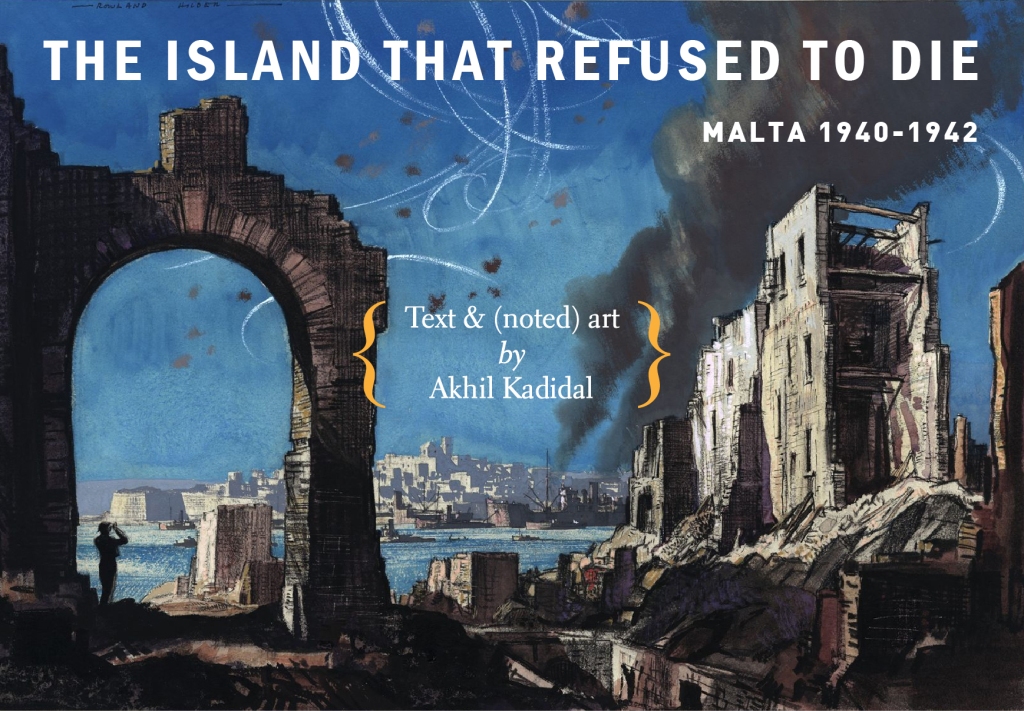
The following is an excerpt from my 267,000-word manuscript on the battle for Malta, which remains in work. This post was updated in August 2023. | Header painting above by Rowland Hilder, 1942
When the Italian dictator Benito Mussolini bought his country into the Second World War in June 1940, he did so believing he could wrest control of the Mediterranean Sea from his rivals, Great Britain and France.
For those Italians who dreamed about a new Roman Empire stretching to the oceans, the Mediterranean was mare nostrum (our sea). Only one immediate hurdle stood in their way — the tiny British bastion of Malta, just 60 miles south of Sicily, occupying a strategic place in the narrows of the central Mediterranean, a rocky aircraft carrier from where the British could launch attacks on Italy and her territories and a natural anchorage for their Royal Navy from where it could project power in the region.
Mussolini was determined to crush the island. But he (and later the Germans) had badly underestimated the fighting spirit of the islanders. Although outnumbered and outgunned, British planes and warships manned by volunteers, veterans and misfits from across the British Empire and the United States harried Axis aircraft and wreaked havoc upon their convoys. This hindered the movement of supplies to North Africa where a skilled German General, Erwin Rommel, was campaigning to seize Egypt and ultimately, the oil-rich territories of Persia.
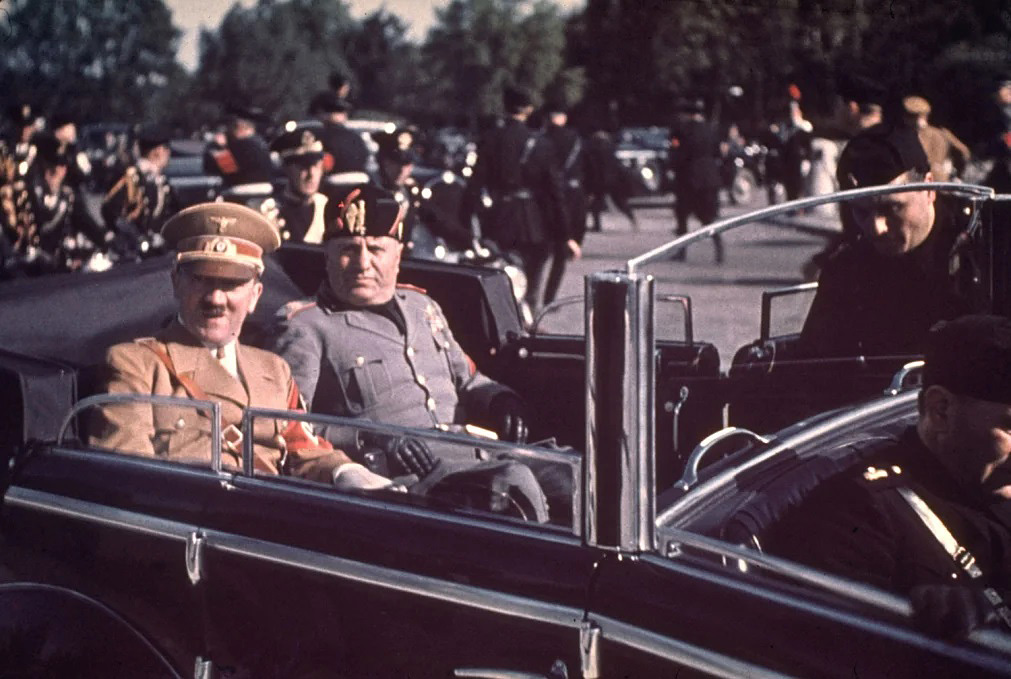
The Axis responded by trying to blast Malta off the map and starve it into submission.
Kept alive through a tenuous and erratic supply line — vulnerable convoys sailing from Gibraltar and Alexandria, Malta hung on, wielding massive influence on the battles raging in North Africa and sparking fierce naval clashes which gutted the Axis merchant fleets and scarred the Italian Regia Marina – that other Royal Navy.
The phrase “naval battles of World War II” may conjure imagery of the Pacific, but more surface engagements were fought in the Mediterranean than in any other place during the war — 50, compared to 36 in the Pacific and 49 in the Atlantic. The siege of the island lasted for nearly two-and-a-half years. The siege eclipsed all the great sieges of modern history (barring Leningrad) as the defenders fought a lonely, heroic campaign, a private little war against the might of two Axis militaries
Over its 900 days of siege, the lonely island began to thwart distant Rommel and preserve the Allied war effort. It found itself confronted by the weightier concerns of saving its people not only from a deluge of bombs but also the prospect of mass starvation as its defenders reached breaking point time and time again.
1940, THE JACKALS
Nazi Germany’s emergence as a military superpower was a result of its conquest of Poland, Norway, the Low Countries and France in 1939-40. However, this feat of military prowess threatened to mitigate the two-decades of Italian empire-building. Such feats by the German dictator, Adolf Hitler, also threatened to eclipse the reputation of Benito Mussolini as the strongest man in Europe.
“Every time Hitler takes a country he sends me a message,” Il Duce complained to his inner sanctum. It propelled Il Duce (as he was known to his people) to embark on a dangerous path to rival Germanic military successes with Italian conquests in the Mediterranean.
It did not help that Mussolini’s relationship with Hitler see-sawed from loathing to love. Despite his suspicion of the Nazis, he could not ally himself with Germany’s great rival, Great Britain, because he had been angered by a British naval blockade as retaliation for his conquest of Ethiopia in 1936. That blockade had been enforced by units operating out of Malta. Neither could he turn to France, whom he regarded as yet another rival for dominion over the Mediterranean. Instead, he forced himself to ally with Nazi Germany, and began making tepid preparations to enter the war in mid-1940.
With France on the back foot and with the British Army hemmed in at Dunkirk by June 1940, Italian military leaders believed that the “state of prostration of our adversaries,” presented Italy with the chance of a quick, short war, in order to stake a claim of the spoils.
Italy, however, was in no shape to make war. The country was heavily dependent on imports from the British Empire, and was bogged down by a corrupt bureaucracy and an inefficient arms industry. Convinced that the war would end in September 1940 with the German conquest of Great Britain, Mussolini made half-hearted plans to contain the British Mediterranean Fleet. His plan was to subdue Malta – a strategically important British base, which, like Italian Sicily, had dominated the central Mediterranean for five centuries.
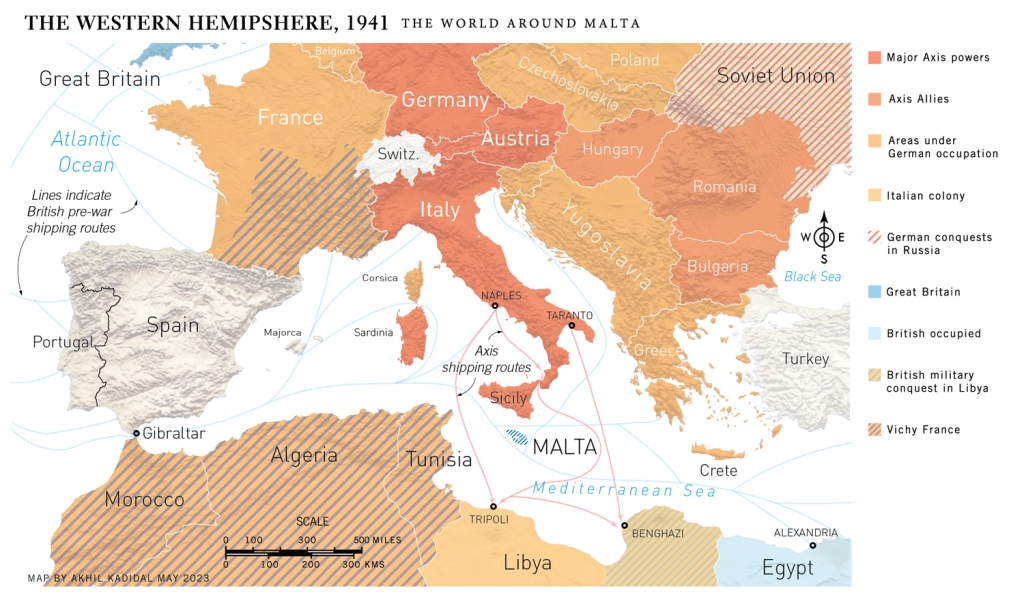
The Italian Air Force (the Regia Aeronautica) recommended pinning the island down with air attacks until the Italian Army could secure Egypt.
The plan seemed sound. But when, on June 10, Mussolini announced his declaration to make war against Britain, and in a speech to the Italian people, described the coming conflict as a clash of ideologies, nationalism versus democratism, and as a “gigantic struggle…of the fecund and the young peoples against barren peoples slipping to their sunset,” ordinary Italians appeared strangely sullen and uninspired.
The declaration of war threw Malta into confusion. Not only were the islanders perplexed by Mussolini’s decision to go to war against the British but few believed that the Italians, their friends and brothers in peace, would attack them in war.
A consumerist culture, the island was in no position to withstand a siege. It imported £5 million (equating to £418.1 million in 2023) worth of goods annually from Britain, and what was worse, it was no position to defend itself. The British Royal Navy having had decamped for Egypt in 1939, followed by the single flight of the Royal Air Force (RAF) based on the island. The island’s military chiefs could count on just a few small warships, a few thousand under-equipped British and Maltese troops, and a paltry collection of anti-aircraft guns for defense.
The island had almost no aircraft and certainly no fighters to thwart the 200 Italian combat aircraft gathering on nearby Sicily. When several crates with Gloster Gladiators, an obsolete type of biplane fighter aircraft were discovered at a naval storehouse, senior British officials on the island ordered their immediately assembly. All this happened even as distant London debated pulling out of the Mediterranean all together. Mussolini’s gamble, it seemed, was on the verge of paying off.
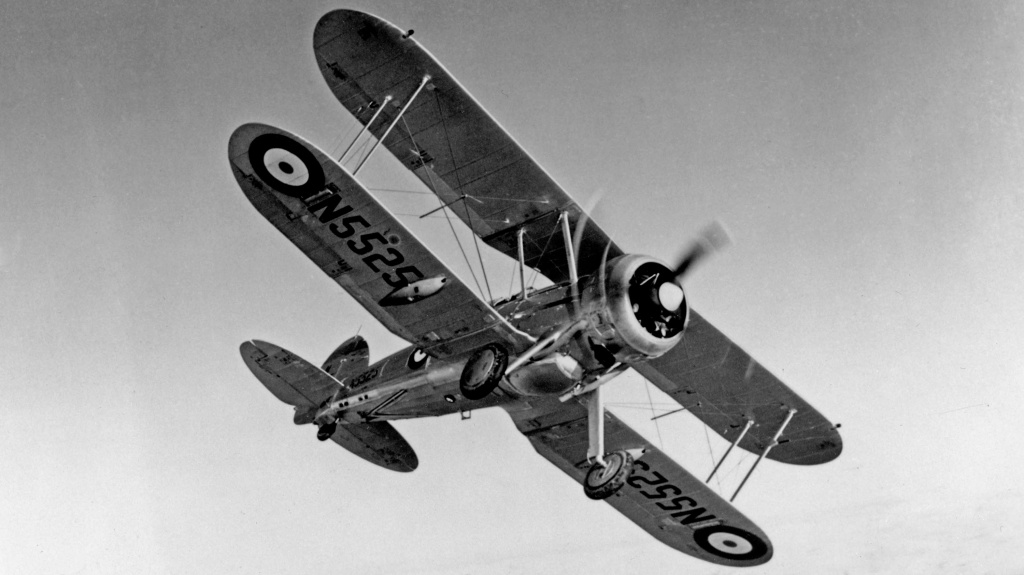
As the declaration of war was relayed over the radio on the evening of 10 June 1940, the island’s governing council made a last-minute attempt to place its military forces on alert.
It opened all available air-raid shelters across the island and prepared the population for the possibility of massed air raids. Few Maltese, however, were taken in by the government’s worry. Many islanders were convinced that the islands’ small size made them difficult targets to bomb. A group of Maltese accosted RAF men in Valletta, demanding that they ratify the idea that the odds of a bomb hitting the island were a “million to one.” The airmen agreed. Malta was too small to hit.

This mentality, in part, prompted the collapse of an elaborate plan by the Governor, Sir Charles Bonham-Carter, to evacuate the residents of the heavily populated Grand Harbor area and the capital, Valletta, to the countryside. But Bonham-Carter was not unduly worried. He knew that the bombs would achieve what his edicts had failed to do so far.
On the morning of June 11, a Tuesday, the Maltese were awoken sounds of gunfire and explosions. The bombing caught the early morning shifts of dockyard and municipality workers in the open. But casualties were relatively low — seven men killed. This raid, the first of eight that day, threw the Maltese into panic. Their sense of vulnerability was made more acute by the fact that their Italian brethren had betrayed them and that the RAF’s quartet of old biplane Gladiator fighters had failed to score.
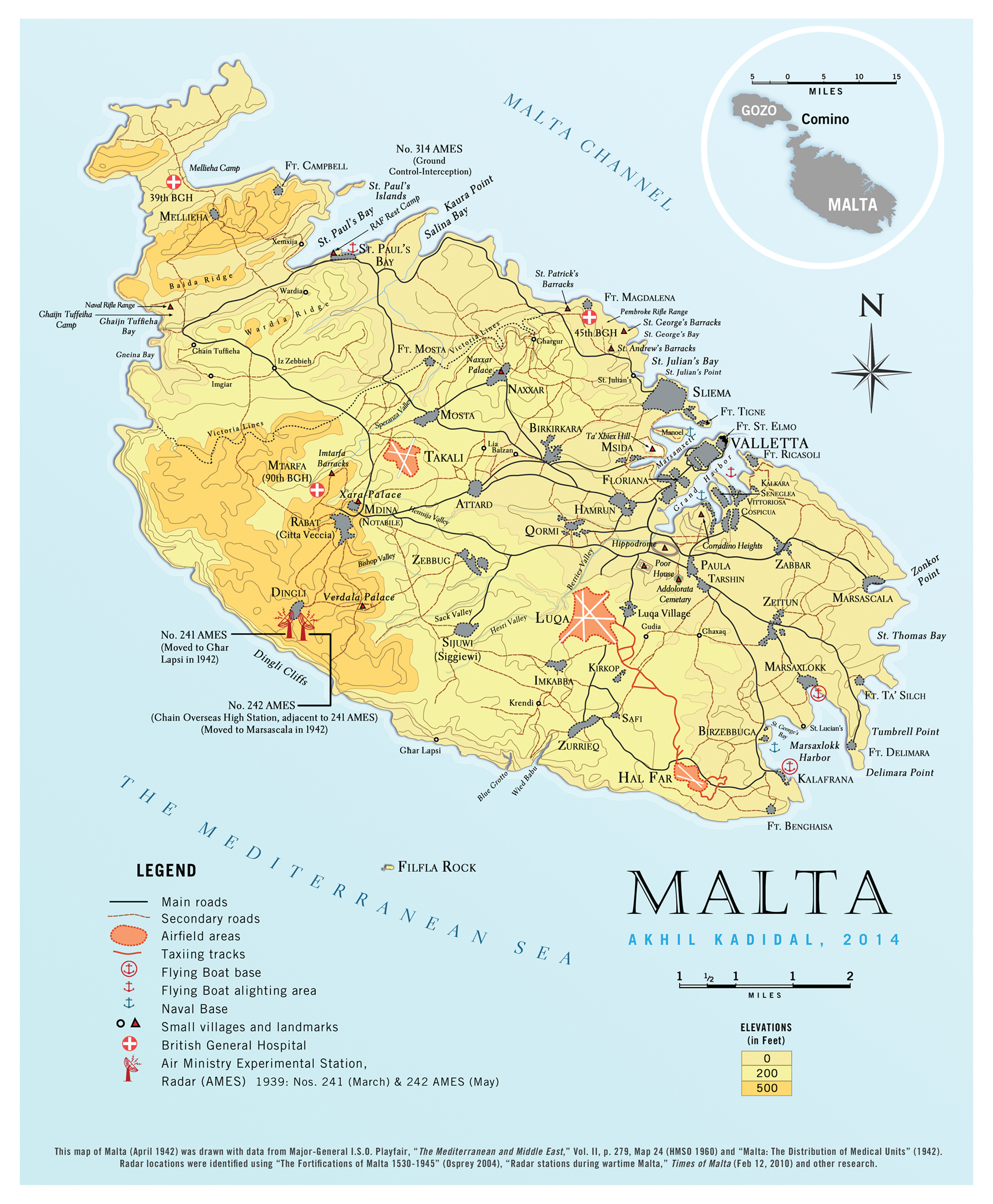
Great hopes had been pinned on the Gladiators. The first three aircraft were named “Faith,” “Hope” and “Charity.” A fourth, perhaps appropriately, was allegedly nicknamed “Desperation.” The nicknames were said to be the brainchild of Flying Officer John Waters to honor St. Paul’s declaration following his shipwrecking on the island in February 60 AD. In reality, the naming of the Gladiators, like so much of the Malta story, was the product of wartime propaganda and myth. Evidence suggests that a Maltese newspaperman actually coined the names in 1941 — long after the Gladiators had vanished from the scene. Legend claimed that the Gladiator pilots had initial suggested naming the aircraft: “Pip,” “Squeak” and “Wilfred.”
By the morning of June 12, Malta was paralyzed. Streets were deserted. Shops and offices were closed as the Maltese refused to leave their homes. But then something unexpectedly happened. No Italian aircraft appeared that day and the Maltese began an great exodus. As many as 80,000 residents of the Grand Harbor area fled their homes for the countryside, justifying British fears that one of the biggest problems on Malta, aside from the threat an Italian invasion, was internal collapse.
Those Maltese with no relatives in the country sought refuge in recently opened shelters and vigorously embraced the task “of going to ground.”


When the biplane Gladiators once again failed to halt Italian bombers on the 13th, the island’s RAF chief, Air Commodore “Sammy” Maynard, cabled the Air Ministry in London, requesting modern fighters. The Air Ministry, however, was busy carrying out preparations to the defend the British Isles. German air units were gathering in France to mount what would become known as “The Battle of Britain.”
No aircraft are initially sent to Malta, but the Gladiator pilots finally began to show their mettle when they shot down a handful of Italian aircraft. Overnight, they were heroes, their photos gracing homes across the island, placed next to images of Jesus and Mother Mary.
Mussolini’s optimism over the course of war started to evaporate when the Regia Marina also began to suffer heavy losses in the Mediterranean. Nevertheless, he proceeded with inane domestic policies framed with a short-war timetable in mind. Over half of the army was discharged so that they could return to the agricultural sector while thousands of skilled Italians who could otherwise be employed in the Italian armaments industry, languished without jobs.
By late September, despite his commitments in North Africa, Mussolini still had 80,000 troops available without a war to fight. Instead of commandeering every available ship and packing them with troops to invade Malta, Mussolini sent them east, into Greece, expecting a lightning victory to rival German military conquests in the west. When his son-in-law, Count Ciano, asked him why, he retorted: “Hitler keeps confronting me with accomplished facts. This time, I will pay him back with his own coin.” Malta, he hoped, would simply be acceded to Italy following the German defeat of Britain.
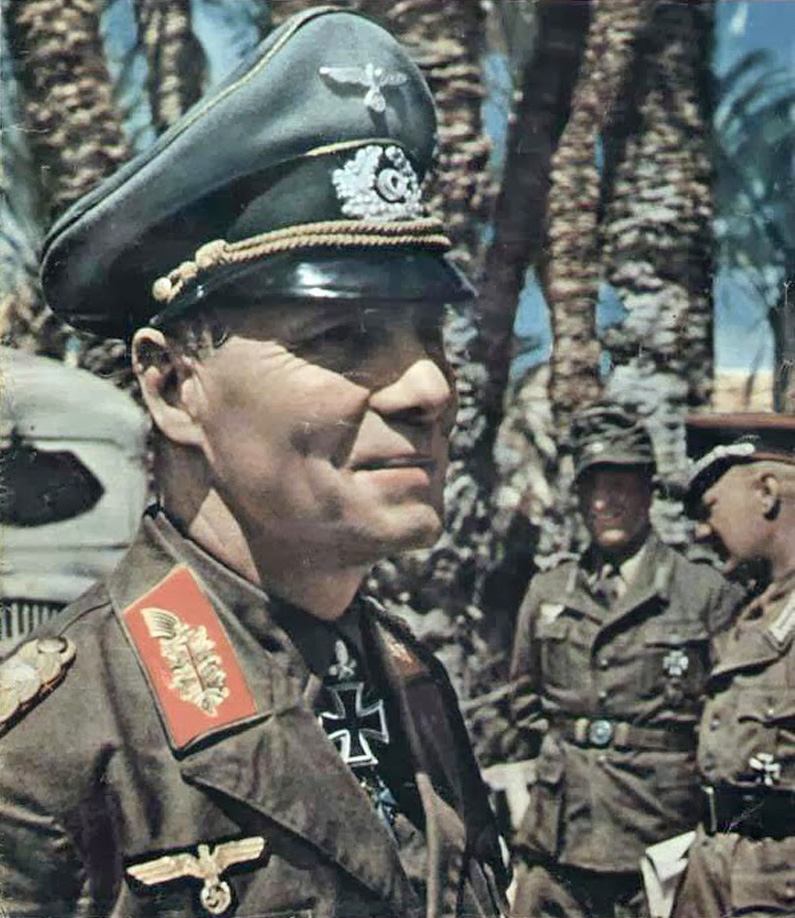
Within six weeks, the Greeks counterattacked, driving the Italians back and hurling Mussolini’s reputation to new depths. In the deserts of Libya, Mussolini’s armies were cut-off and reeling under the blows of a British counteroffensive. Just when it looked as though Mussolini would also lose his Libyan colony, the British Prime Minister, Winston Churchill, stripped the British desert army of its most experienced units and sent them to Greece.
This ill-timed decision coincided with the assembly of a German expeditionary force in southern Italy under an ambitious German General, Erwin Rommel, who was preparing to reinforce the beleaguered Italians in Libya. Malta, having no offensive weapons, was powerless to intervene.
Neglected by Britain and fast running out of supplies and aircraft, Malta was in crisis by mid-summer. London hastily dispatched a shipment of 12 Hawker Hurricanes, a relatively modern monoplane fighter, plus a three-freighter convoy codenamed MF2 to serve as the litmus test for future convoy runs.
The arrival of the Hurricanes allowed Maynard to form a new fighter unit (261 Squadron). The freighters, however, ran into Italian bombers and suffered damage. They nevertheless punched through to deliver 40,000 tons, which was only half of what is required. In June 1940, Admiral Andrew Browne Cunningham, the Lord Nelson-like chief of the British Mediterranean Fleet, had estimated that two 40,000-ton convoys were required each month to keep Malta up to its pre-war standard of life. A system of rationing should have been introduced at the declaration of war, but the governor and the ruling council had felt that it would not go down well with the population. Now, with just six to eight months’ worth of food left, the island would pay a price for their indecision.

Under pressure from Churchill to knock the Italian Regia Marina out of the war before the Germans could enter the theater of operations, Cunningham intended to use a second Malta-bound convoy (codenamed MB5) to draw out the enemy. The Italians declined the challenge.
Emboldened by their lack of resolve, London began to stream reinforcements to Malta, including reconnaissance aircraft to monitor sea lanes and Italian harbors, medium bombers to bomb Rome and Naples in retaliation for the Italian invasion of Greece, coastal aircraft to hit their navy and more Hurricanes plus anti-aircraft batteries to defend the island.
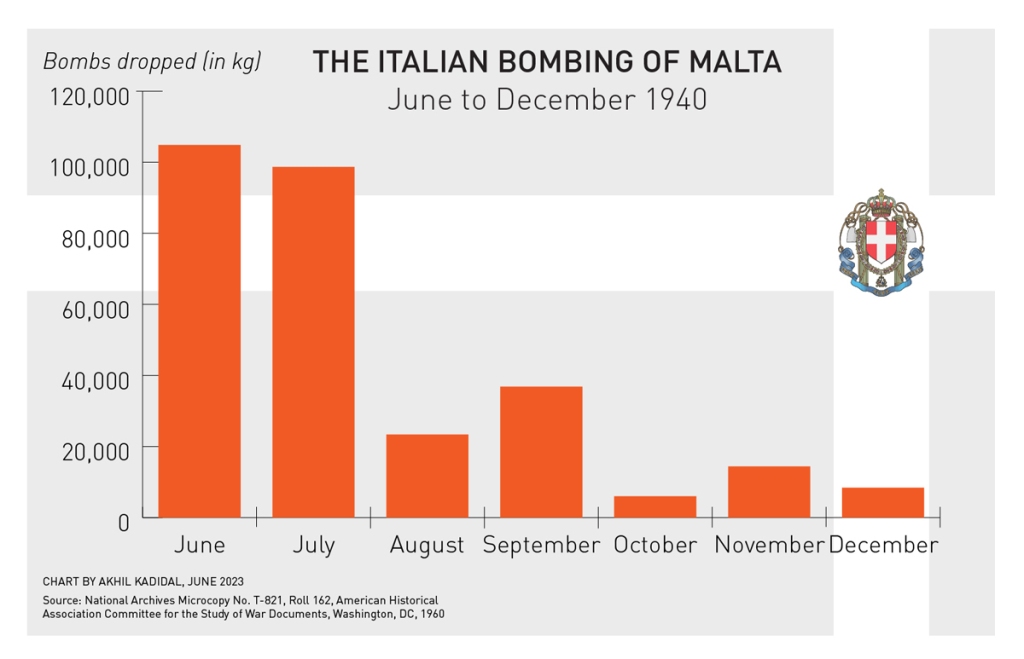
These arrivals came at a time of declining air attacks (there were just 18 air-raid alerts on Malta in December 1940, compared to 53 in June). When a third supply convoy (MF3) arrived that November, bringing in additional weaponry and normalizing food stocks on the island, Cunningham was free to focus on a decisive strike against the Italian Fleet. He hoped this would render the British masters of the Mediterranean.

Dusting off an old attack plan first proposed in 1935 at the height of the Abyssinian Crisis (when it looked as though Britain might be in a shooting war with Italy), Cunningham moved his newest aircraft carrier, HMS Illustrious, 300 miles off Italy. The intention was to conduct a daring raid to sink Italy’s capital ships at their moorings at the great naval harbor of Taranto, on the heel of the Italian “boot.”
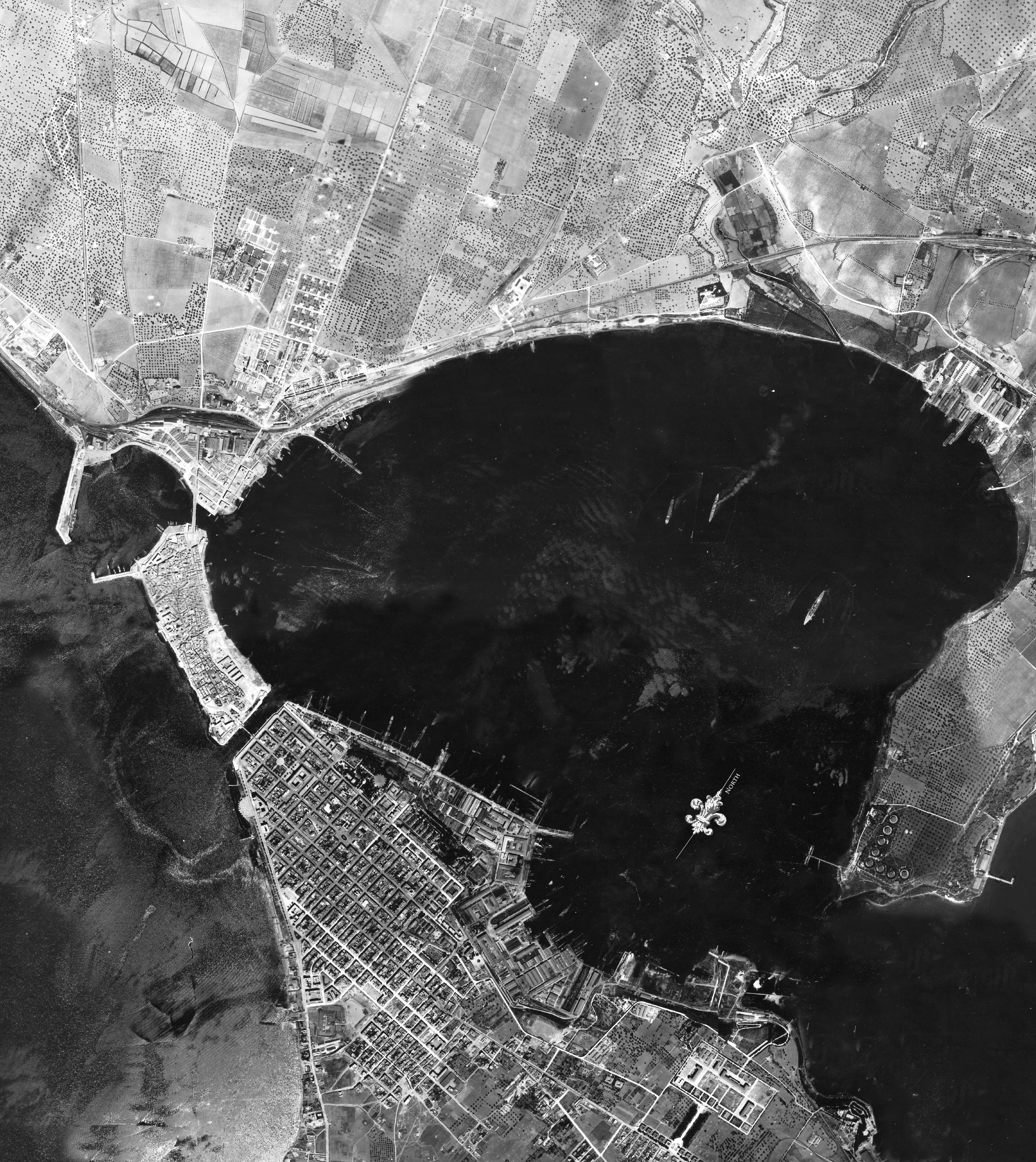
Two dozen Fairy Swordfish biplane torpedo-bombers launched from Illustrious after nightfall on November 12. Despite the fragile nature of the antiquated Swordfish, the raid was a spectacular success.
In a single night, three of Italy’s battleships were put out of action, one permanently. The Conte di Cavour lay beached in the shallows, her decks awash. The Caio Duilio was out of action for six months and the Littorio was partly sunk. She was destined to spend the next five months in a dry-dock. One cruiser, the Trento, leaked oil and two destroyers, the Libeccio and the Pessagno had their hulls fractured. Two auxiliary ships were also damaged. The seaplane base and the oil storage depot were in shambles. Overnight, a mere 20 obsolete biplanes had altered the balance of naval power in the Mediterranean. And the price for this endeavor was two Swordfishes lost.
In London, a cockney newspaper seller announced the news: “Eyeialian fleet done in. No more macaroni.” But the attack would prove not to be decisive. Two of the crippled battleships would return to active service in a year’s time.
The strike served as a glaring demonstration of the battleship’s supersession as the primary naval weapon by aircraft and aircraft carriers. The British Admiralty was slow to grasp this lesson, although the Americans and the Japanese had not. Days after the raid, amid the great scenes of destruction, a diminutive man could be found trawling the ruins, writing in a notebook, his face congealed in concentration and study. He identified himself as Lt. Takeshi Naito, assistant air attaché at the Japanese embassy in Berlin. The implications of the raid were clear to the Japanese who were ready to apply the same lessons to another shallow-water harbor on the side of the world — Pearl Harbor.
As 1940 came to a close, Malta was socked in by a rare snowstorm. This, coupled with a temporary cessation of Italian air raids in recognition of Christmas, prompted authorities to lift the curfew. Music halls, cinemas and bars across the island reopened for round-the-clock business.
The Maltese thronged the streets of every village, town and city. Both sides were in such détente by the end of the year that an RAF intelligence officer on Malta regularly called his counterpart in Sicily to discuss the events of the day. New arrivals from Britain, especially new, battle-hardened veterans of the Battle of Britain, were unimpressed. Many were openly contemptuous of the casual nature of operations on the island.
“It is hardly a serious business or warfare like the Battle of Britain,” said one pilot, Sgt. Cyril “Bam” Bamberger.
A sense of contempt also pervaded Germany over the blitheness of their Italian allies. The German propaganda minister Josef Göbbels angrily wrote that the Italians were millstones around German necks, having “brought the entire military prestige of the Axis crashing down in ruins.”
A German air corps, Fliegerkorps X, was transferred from Norway to Sicily to help regain control of the skies over the central Mediterranean and allow Rommel’s command, the Afrika Korps, to reach Libya unimpeded. The fighting prowess of the Italians was already suspect, notwithstanding the fact that their existing fighters, notably the Macchi C.200, were out-matched by Malta’s new Hurricanes.

Under General Hans Geisler, Fliegerkorps X began deploying to Sicily from 10 to 14 December. Over Greece, Italian fighter units had been able to claim a two-to-one victory-to-loss ratio. Over Malta, these ratio had slipped badly in favor of the RAF. The arrival of Fliegerkorps X prompted the Italian Regia Aeronautica to rest its crews. Many Italian aircraft on Sicily were withdrawn to the mainland. This was initially a setback to Fliegerkorps X. The Germans did not have enough short-range reconnaissance planes on Sicily and their strength was slow to build up. On 9 January 1941 — a day before Fliegerkorps X officially began operations against Malta — Geisler had only 156 planes on Sicily. By early March, however, aircraft strength had reached 510 planes, of which roughly 340 were combat ready.
Their presence made an immediate difference and escalated the scale of the combat against the island. Geisler used fast German Junker Ju88 medium bombers, backed up by Italian Savoia-Marchetti SM79s to bomb Malta from high-altitude.
The days of Malta’s private little war were about to become a thing of the past.



I was very interested to read your notes on Ronald Chaffe. I am currently writing a definitive history of Bristol Rugby Club, and he played one game for us in 1935-36. No official list has survived of the club’s WW2 fallen, but I knew he was one of them. However, I only knew he had died off the coast of Malta, so your notes have been of great value and will be acknowledged in the book. The only other info I have on him is that he attended Cotham School in Bristol and is listed on the war memorial there.
Mark Hoskins
Historian Bristol Rugby
Glad to be of help.
Yeah, Ron Chaffe was a very colorful character. His untimely death was the stuff of a Homeric tragedy. Completely unnecessary.
I have additional information about his time on Malta which could be of interest – although it may not be pertinent to your book.
Thank you so much. Anything else you have would be of interest. I know so little about our WW2 casualties. You may well have a couple of gems I might use.
Hi Mark,
I’m away from home, on assignment, at the moment. I’ll get you more information once I’m back.
Thank you. Absolutely no rush.
I am very interesting in learning when this book will be published.
Thanks for the interest,Steven.
The book is almost complete, but I’ve been caught up in a side book project on nature for an organization – which has taken a protracted amount of time to finish.
Nevertheless, I plan to wrap up “Malta” by June and hope to move it on to the publishing stage by the end of the year.
Thanks for the information. I would be very interested in purchasing a copy if you will let me know who is selling it.
I’ll post the information on this page when it’s out. Thanks.